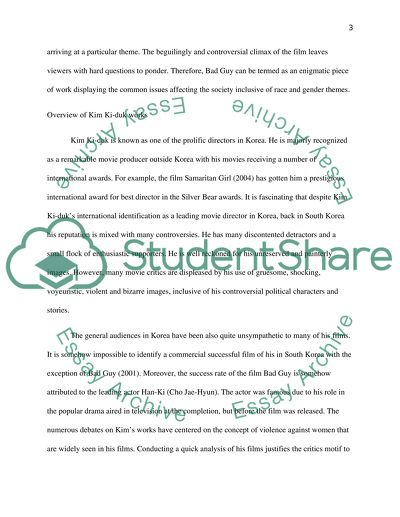Cite this document
(“Gender Portrayal in the Film Bad Guy Essay Example | Topics and Well Written Essays - 2750 words”, n.d.)
Gender Portrayal in the Film Bad Guy Essay Example | Topics and Well Written Essays - 2750 words. Retrieved from https://studentshare.org/journalism-communication/1639599-vc3-race-and-gender
Gender Portrayal in the Film Bad Guy Essay Example | Topics and Well Written Essays - 2750 words. Retrieved from https://studentshare.org/journalism-communication/1639599-vc3-race-and-gender
(Gender Portrayal in the Film Bad Guy Essay Example | Topics and Well Written Essays - 2750 Words)
Gender Portrayal in the Film Bad Guy Essay Example | Topics and Well Written Essays - 2750 Words. https://studentshare.org/journalism-communication/1639599-vc3-race-and-gender.
Gender Portrayal in the Film Bad Guy Essay Example | Topics and Well Written Essays - 2750 Words. https://studentshare.org/journalism-communication/1639599-vc3-race-and-gender.
“Gender Portrayal in the Film Bad Guy Essay Example | Topics and Well Written Essays - 2750 Words”, n.d. https://studentshare.org/journalism-communication/1639599-vc3-race-and-gender.


